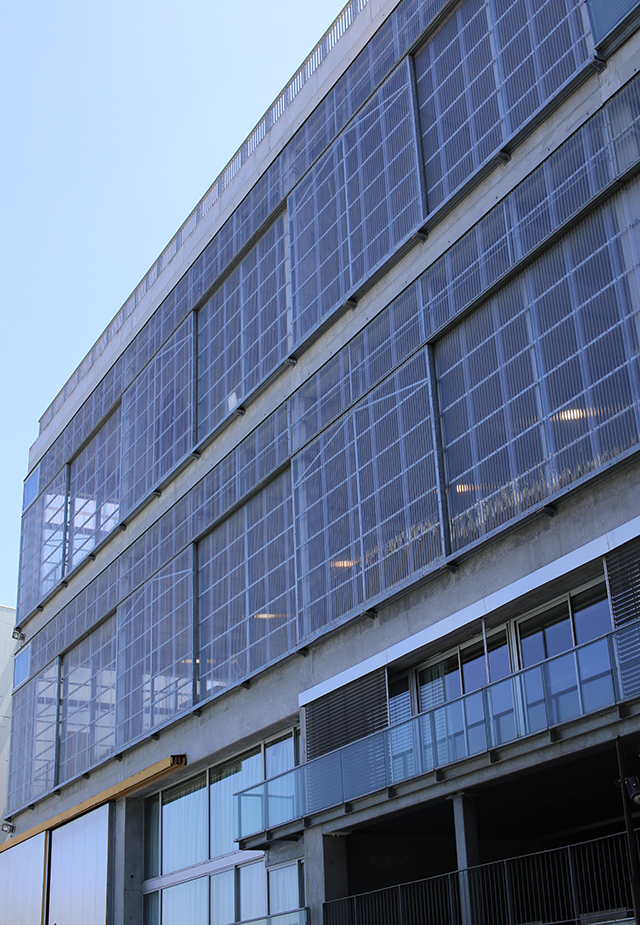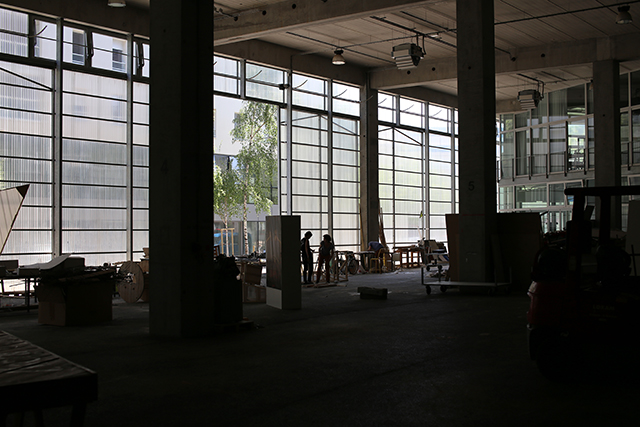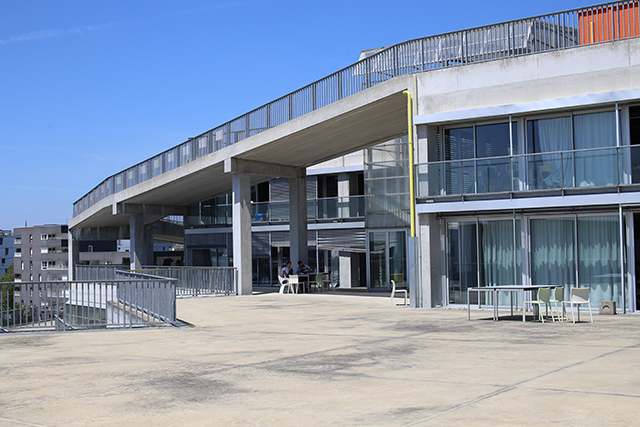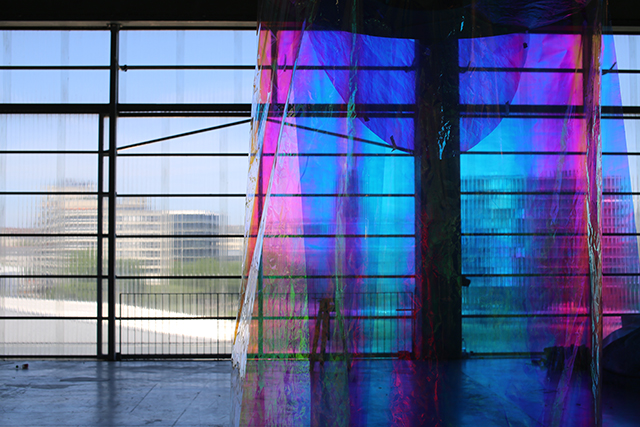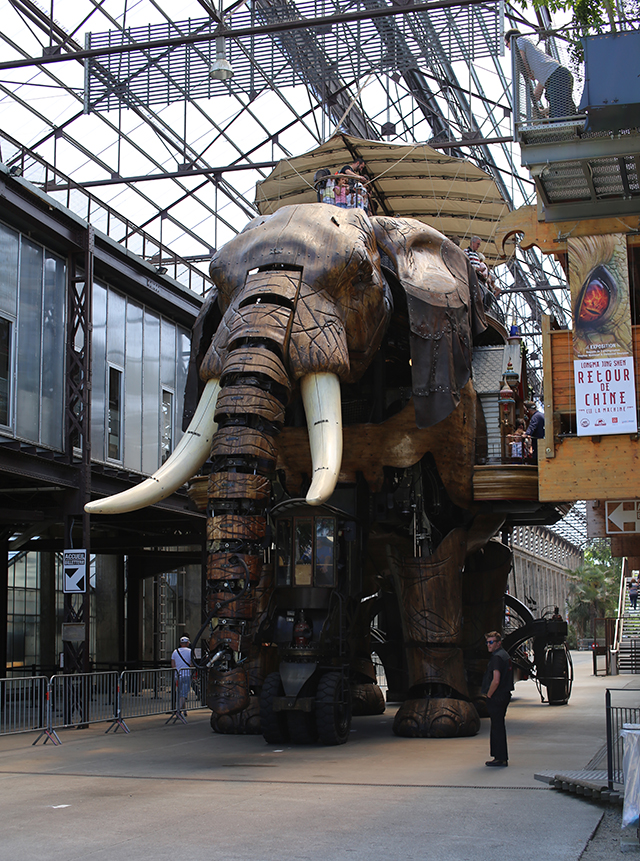Last week I went to see a building I’d been longing to visit since it opened in 2009. The School of Architecture in Nantes (ENSA) by Architects Anne Lacaton & Jean-Philippe Vassal takes a provocative and inspiring attitude to educational space that is sadly lacking in most British universities. It looks like a carpark, which is pretty much what it is in its construction. From their first built works, Lacaton & Vassal became known for a low-cost way of building that stretched the budget to provide the maximum possible volume of usable space using utilitarian materials and off-the-shelf products like greenhouses.Continuing this approach, the School of Architecture has a concrete frame which defines a volume of space, only part of which is enclosed and environmentally controlled to the level necessary for classrooms, lecture theatres and studios. The rest is loosely enclosed by translucent polycarbonate sheeting on galvanised steel frames, half of which can open up as ventilation flaps or as huge sliding doors. The great thing about it is the huge amount of indeterminate space that can be used for making, exhibition or just socialising. There is around 15000 sq m of environmentally controlled teaching space at a cost of just £890 / sq m, but on top of this there are 4400 sq m of unprogrammed space and 5300 sq m of outside terraces, so the university (and the students) are getting incredibly good value from their budget.
Somehow the place operates without any security. It was just open on a Saturday morning for anyone to wander around, like a public space or piece of infrastructure. Some of the workshop doors open directly on to the surrounding streets, giving the work of the school a direct presence in the life of the city. Similar doors open on the upper levels, allowing the facades to transform into a range of semi-open air decks, breaking the convention of education as an internal and insular activity. A ramp winds around the building, connecting all the external terraces from ground level right up to the roof.
The school has a terrifically relaxed, informal atmosphere, buzzing with the potential for creativity. As English schools become crammed with ever-increasing numbers of students there is less and less room for them to do anything other than work on a laptop. In Bath where I teach there are now over 100 students in each degree year, squeezed into the same studios that my year of 35 used 25 years ago. (Did I just write 25 years? Blimey…) A new building is under construction in Bath for use from 2016 but its studios have been designed pretty much as generic office space, with nothing too specific to a school of architecture that might restrict the estates department from converting them to another use in the future.
I was rather concerned how I would persuade the rest of the family that visiting the architecture school was a worthy first stop of the holiday but fortunately a huge mechanical elephant came to my aid. The Ile de Nantes is an area of urban regeneration and amongst the usual commercial developments with silly cladding, several magnificent industrial structures remain. One, an ex-shipyard is the home of Les Machines d’Ile, a workshop that builds fantastical mechanical creatures inspired by the work of Jules Verne and Leonardo da Vinci. The elephant came to London in 2006 as part of a 4 day street performance called the Sultan’s Elephant that was seen by over 1 million people. He was out for a walk when we got there.



